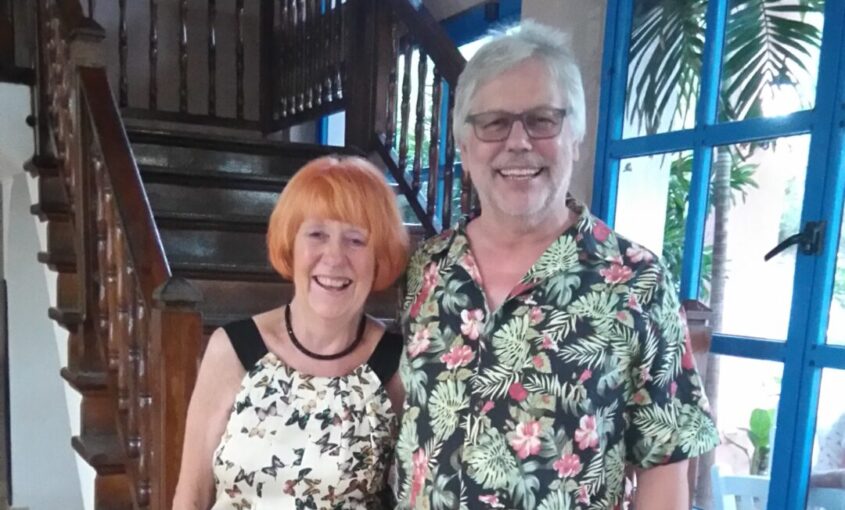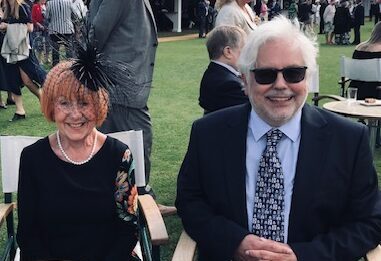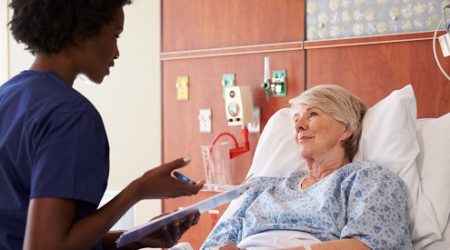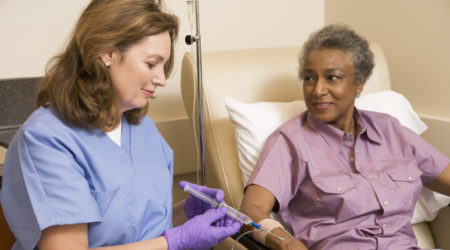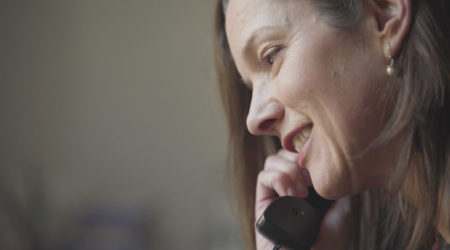

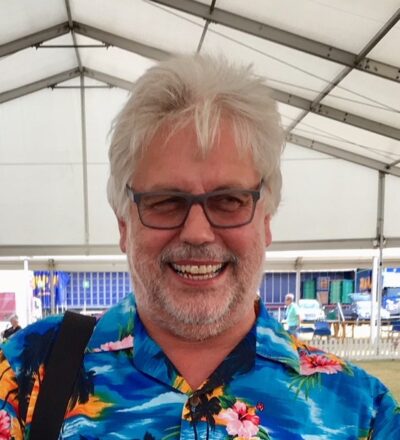

Stuart
Stuart was 63 when he was diagnosed with a tumour at the head of his pancreas. After a successful Whipple's procedure and chemotherapy, Stuart has been able to get back to travelling and enjoying life. He reflects on his experience of the diagnosis and subsequent treatment.
Experiencing concerning symptoms
I had experienced bodily itching and in early 2015 and, as my GP was concerned about this, I was referred for further investigation. After exhaustive tests which included ultrasound, MRI & CT scans, endoscopies and colonoscopies(a test to look inside your large bowel)…all of which were clear, I was diagnosed with anaemia and was put on a course of iron supplements and otherwise given a clean bill of health in November of that year.
In February 2016 whilst visiting New York, I collapsed in my hotel room and vomited what appeared to be dark coffee grounds. I was taken by ambulance to the hospital with a suspect bleed in my duodenum. My haemoglobin count was dangerously low and I was given several blood transfusions before being admitted as an emergency patient in order to stabilise me and to investigate the cause of my collapse.
A tumour on my pancreas was found
I had an endoscopy and a highly aggressive tumour at the head of my pancreas was detected. I was informed that there was a window of opportunity of no more than 3 months during which an operation could be performed to remove it. If this was not done, I was advised that the tumour would then be inoperable.
After speaking to several consultants about having treatment in the USA, I was told that I could travel back to the UK for treatment if that was my preference. I opted to return home as I did not wish to contemplate a prolonged stay in New York undergoing post-operative chemotherapy.
Stuart
Surgery to remove the tumour
Upon my return home I was referred as a matter of high priority for surgery. The surgeon confirmed that it was still possible to remove my tumour and explained the procedure involved. I was scheduled to have a pancreatic duodenectomy, more commonly referred to as a Whipple’s procedure, to be followed by a course of chemotherapy.
I had surgery which lasted in excess of 12 hours on 17th April and, being aware of the pain and discomfort I might experience, I elected to have an epidural. After 3 days in intensive care, the surgeon told me that my tumour had been successfully removed and that there was no trace of it having spread.
Recovery after the major surgery
I was moved to a surgical ward where I spent the next 5 weeks. I was in a great deal of pain which was managed by a morphine drip which I could self-administer. I had a tube inserted through my nose to my throat and was hooked up to a series of lines which fed me through my neck. There were 4 drains inserted in my abdomen which had to be emptied on a regular basis. Over the next 3 weeks I was allowed to sip small amounts of water and nothing else passed my lips during this time.
My body swelled up alarmingly, although I was assured that this was a temporary situation. I was totally immobilised. I could not even flex my toes. I was assigned a physiotherapist who gradually introduced me to gentle movements of my feet. I was allowed to sit in a chair but could not move due to the various drains and equipment to which I was attached. A week later I was able to stand with assistance but was still unable to move.
It was as if I had to learn to walk again as every movement was painful. Eventually I was given a walking frame, and all of my drains and medical equipment were detached from my bed and attached to the frame to allow me to start walking very short distances. Over the next few weeks, my mobility increased and I was able to have my morphine drip removed and could walk, albeit slowly, to the roof garden immediately outside my ward. I was finally discharged after 5 weeks.
Chemotherapy after surgery
I was selected and agreed to take part in a research study for my chemotherapy. I had a port inserted below the skin in my lower neck which enabled drips to be more easily inserted when chemotherapy began. I had one session of chemotherapy which lasted for under an hour every week before which I had blood taken to confirm that I could proceed with the treatment.
This continued for 6 months after which I had the port removed. I had no side effects from the chemotherapy and experienced no nausea, fatigue nor hair loss. I did have to ensure that I wasn’t exposed to sunlight during chemotherapy. As part of the trial, I went to hospital every 2 weeks for the next 5 years to have my blood tested.
Impact on my life now
I consider myself fortunate insofar as I have never experienced any gastrointestinal issues since my operation nor any other setbacks.
I have always enjoyed travel and my operation and subsequent chemotherapy along with the restrictions for 6 months afterwards put holidays on hold. My partner and I decided to try a short break in the sun which would entail only a short flight. We did some research and chose a week in Porto Santo, a tiny island near Madeira. Despite having used masses of Bio Oil since my operation, I was a little apprehensive about exposing the scar left by the staples in my abdomen.
One of my support nurses told me that, should anyone stare at me, I should simply point at it and say “shark bite” as he was certain that would address any concerns! On the first day I planned to sit in the sun for only 30 minutes and, sure enough, someone stared long and hard at my scar. I repeated my nurse’s advice and an embarrassed person simply said “Wow!”.
What was more gratifying was, at dinner that night, I was approached by a gentleman who told me that, having seen me, his wife decided she would wear a bikini next day and not hide her post-operative scar.
We have since been on a cruise which was truly superb and we could honestly say that “normality” had returned to our lives. I should say that I had no trouble obtaining travel insurance after my diagnosis with pancreatic cancer and that I did not have to pay any extra premium as a result of declaring it.
One of my passions in life is showing and judging dogs in addition to writing articles for the canine press. I was able to resume all activities within a few months after completing my chemotherapy and we even acquired a new puppy to assist me in embarking on a new chapter in my life.


